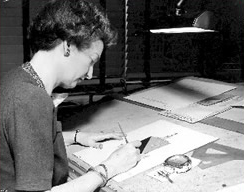4-11 August 1960
Institute of Heraldry established
Military heraldic symbols have been used in the United States military since the American Revolution. But it was not until 1919 that the heraldry activity was established as a separate function within the Army General Staff.
 In 1920 the Army formally approved coats of arms, followed by distinctive unit insignias (more commonly called unit crests) to identify an individual soldier with his regiment. The purpose was to foster Army tradition and esprit de corps.
In 1920 the Army formally approved coats of arms, followed by distinctive unit insignias (more commonly called unit crests) to identify an individual soldier with his regiment. The purpose was to foster Army tradition and esprit de corps.
By 1924, heraldic responsibility was delegated to The Quartermaster General. The Heraldic Section of the Office of the Quartermaster General, in Washington, became responsible for the research, design and development of distinctive unit insignia, shoulder sleeve insignia (patches), flags, medals, seals, coats of arms, and other heraldic items for the Army. The Section also assisted manufacturers in meeting stringent specifications and high quality standards. Every design and every prototype had to gain final approval from the QM General.
On 10 August 1960, Army General Order Number 29 created the Institute of Heraldry (IOH) still under The Quartermaster General. Two years later IOH was transferred to the Adjutant General’s office — and the longstanding QM heraldry became a thing of the past. Today’s Institution of Heraldry resides at Fort Belvoir, Virginia.
Read this article from the History & Heritage section for more information: The Quartermaster Heraldic Section & The U.S. Army Institute of Heraldry
Compiled by Dr. Steven Anders, former Quartermaster School historian.
Quote of the Week:
A soldier will fight long and hard for a bit of colored ribbon.— Napoleon Bonaparte (1815)
